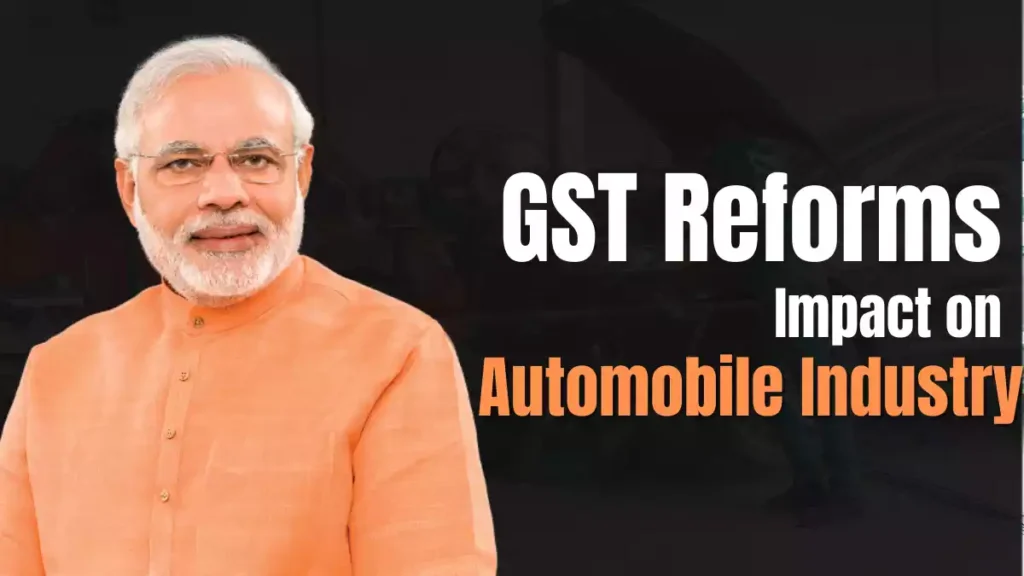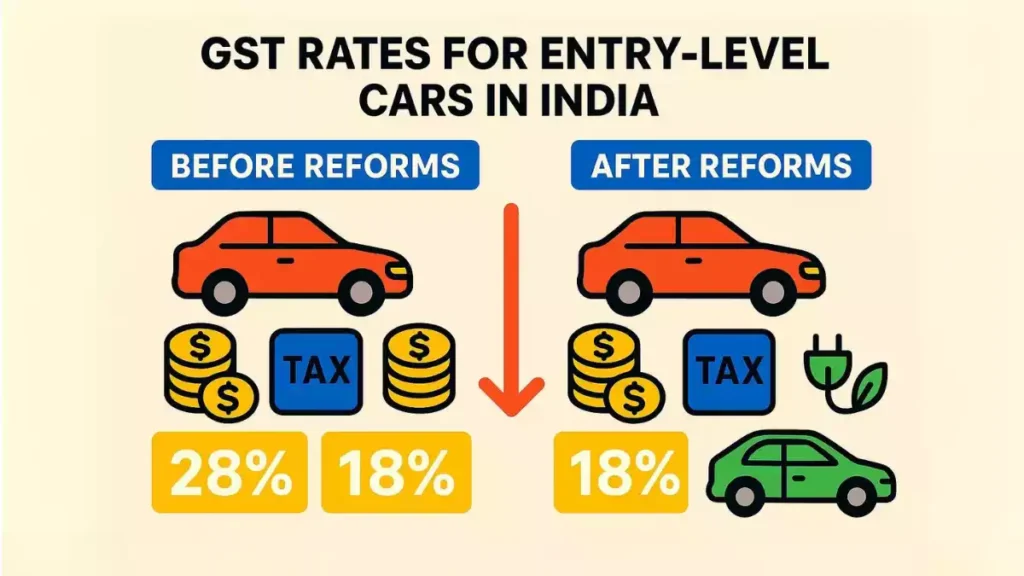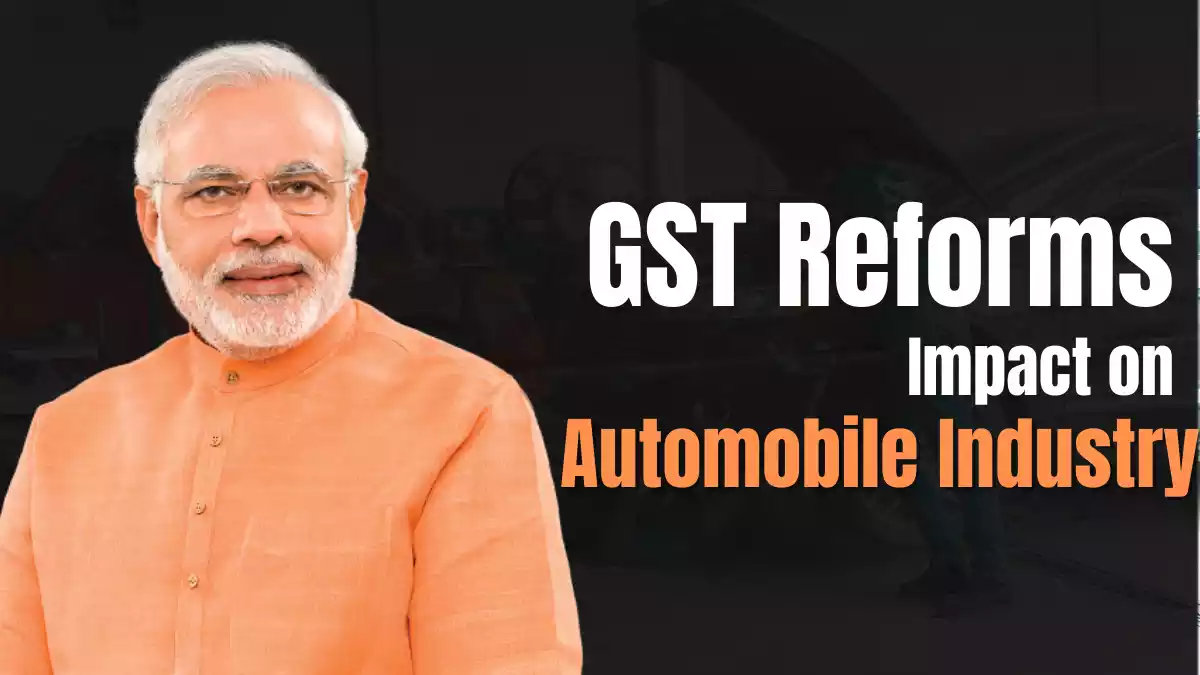The recently proposed GST reforms impact on automobile industry marks a pivotal point for one of India’s most dynamic sectors. By reducing the Goods and Services Tax (GST) on entry-level vehicles and simplifying tax compliance for smaller manufacturers, the government aims to make cars more affordable and boost industry growth. This article provides an in-depth look at what these reforms mean for manufacturers like Tata Motors, consumers, and the wider automobile ecosystem.
Understanding the Proposed GST Reforms in Automobile Sector
India’s GST system, introduced in 2017, unified multiple indirect taxes into a single tax regime but maintained different slabs for various automobile categories. The latest reforms focus on:
- Reducing GST on small petrol and diesel cars priced under ₹10 lakh from 28% to 18%.
- Streamlining multiple GST rates applicable to automobile manufacturers, especially benefiting smaller car makers.
- Offering favorable GST rates on electric vehicles (EVs) to encourage cleaner mobility options.
These reforms specifically target entry-level vehicles—the backbone of India’s passenger car market that caters mainly to first-time buyers and budget-conscious customers.
Why This GST Reform Matters for Auto Manufacturers
Boost for Entry-Level and Small Manufacturers
The reduced GST rate on compact cars is expected to translate into a price drop of ₹50,000 to ₹70,000 on popular models. This makes entry-level vehicles significantly more accessible to a large segment of buyers across urban and semi-urban India.

Smaller manufacturers—who often face higher compliance costs due to complex multi-rate GST slabs—stand to gain from a simplified tax structure that lowers their production expenses. This will help create a more competitive market landscape and encourage innovation and expansion.
Positive Market Response: Tata Motors’ Stock Surge
Tata Motors leads the entry-level segment in India with models like the Tiago, Altroz, and Tigor. Following the GST reform announcement, Tata Motors shares rallied by around 3%, reflecting investor confidence in the company’s growth prospects fueled by expected sales uptick.
Tata Motors Share Price Movement
| Date | Closing Price (₹) | Day-on-Day Change |
|---|---|---|
| August 14 | 565 | – |
| August 19 | 582 | +3% |
Source: Indian stock exchange data
Broader Industry Implications of GST Reforms
Consumer Benefits and Market Expansion
Lower vehicle prices will especially benefit first-time car buyers in smaller cities and rural areas, broadening the automobile market’s customer base. This could potentially lead to a 10-15% increase in entry-level car sales in the year following the reforms.
Moreover, a more affordable vehicle market stimulates ancillary industries, including financing, insurance, and after-sales service, creating a multiplier effect across the economy.

Accelerated Electric Vehicle Adoption
The GST reforms also emphasize sustainable transport by lowering the tax burden on EVs to as low as 5%. This move supports India’s electric mobility goals and can significantly boost EV sales, helping automakers achieve scale and drive down costs.
Supply Chain and Dealership Advantages
Simplified tax slabs reduce paperwork, making compliance easier for manufacturers and dealerships. This streamlining is expected to improve supply chain efficiency and inventory management, ultimately benefiting consumers through better availability and service.
Industry Expert Perspectives and Future Outlook
Market analysts believe these reforms could boost the automobile industry’s revenue by up to ₹5,000 crore over the next fiscal year, driven by rising demand and increased production capacity. The positive sentiment around entry-level vehicles also points to potential job creation in manufacturing and allied sectors.

Companies like Tata Motors, Maruti Suzuki, and Mahindra are well-positioned to leverage this environment, releasing competitive models with updated features and aggressive pricing.
Conclusion
The GST reforms impact on automobile industry is set to transform India’s automobile landscape by making entry-level vehicles more affordable and enhancing competitiveness among smaller manufacturers. Tata Motors’ stock rally is a clear market endorsement of these reforms. With lower prices, simplified tax structures, and incentives for electric vehicles, India’s automobile sector is poised for robust growth, innovation, and an expanded consumer base.
For consumers, manufacturers, and investors, these GST reforms signal a promising road ahead towards a more inclusive and thriving automobile market.
So that’s all in today’s post, for more updates, reviews, and car comparisons, visit IndianGadi.com – your go-to hub for everything on wheels!
FAQs
When will the GST reforms take effect?
The government is expected to implement these changes within the next quarter, subject to parliamentary approval.
Will the GST reforms apply to used cars?
No, the current GST reforms specifically target the manufacturing and sale of new vehicles.
How will the GST reforms affect luxury car buyers?
The reforms primarily focus on entry-level vehicles. Luxury cars remain under the higher GST slab of 28% plus cess.
Are there any benefits for electric two-wheelers?
Yes, electric two-wheelers also benefit from lower GST rates, encouraging cleaner transportation.







